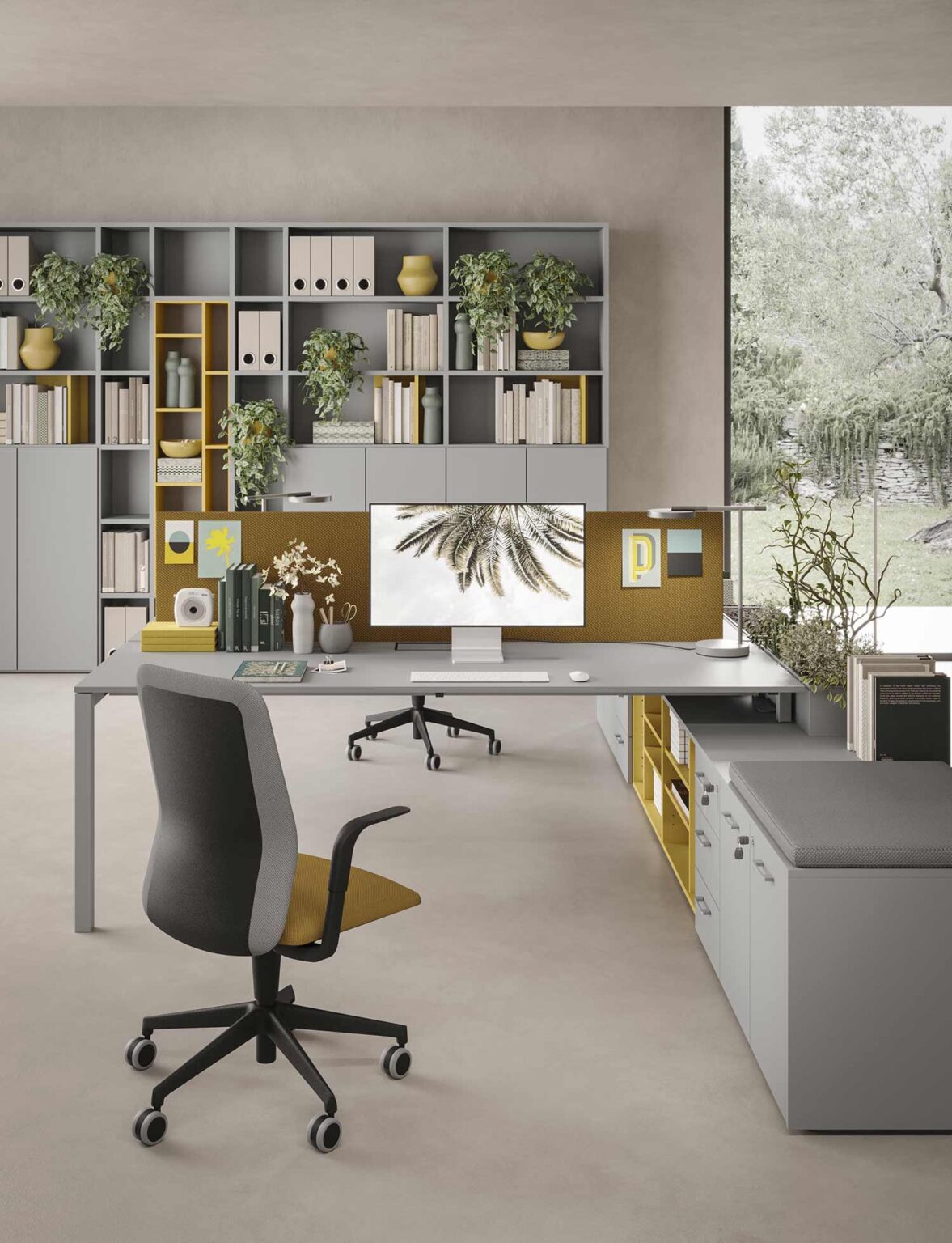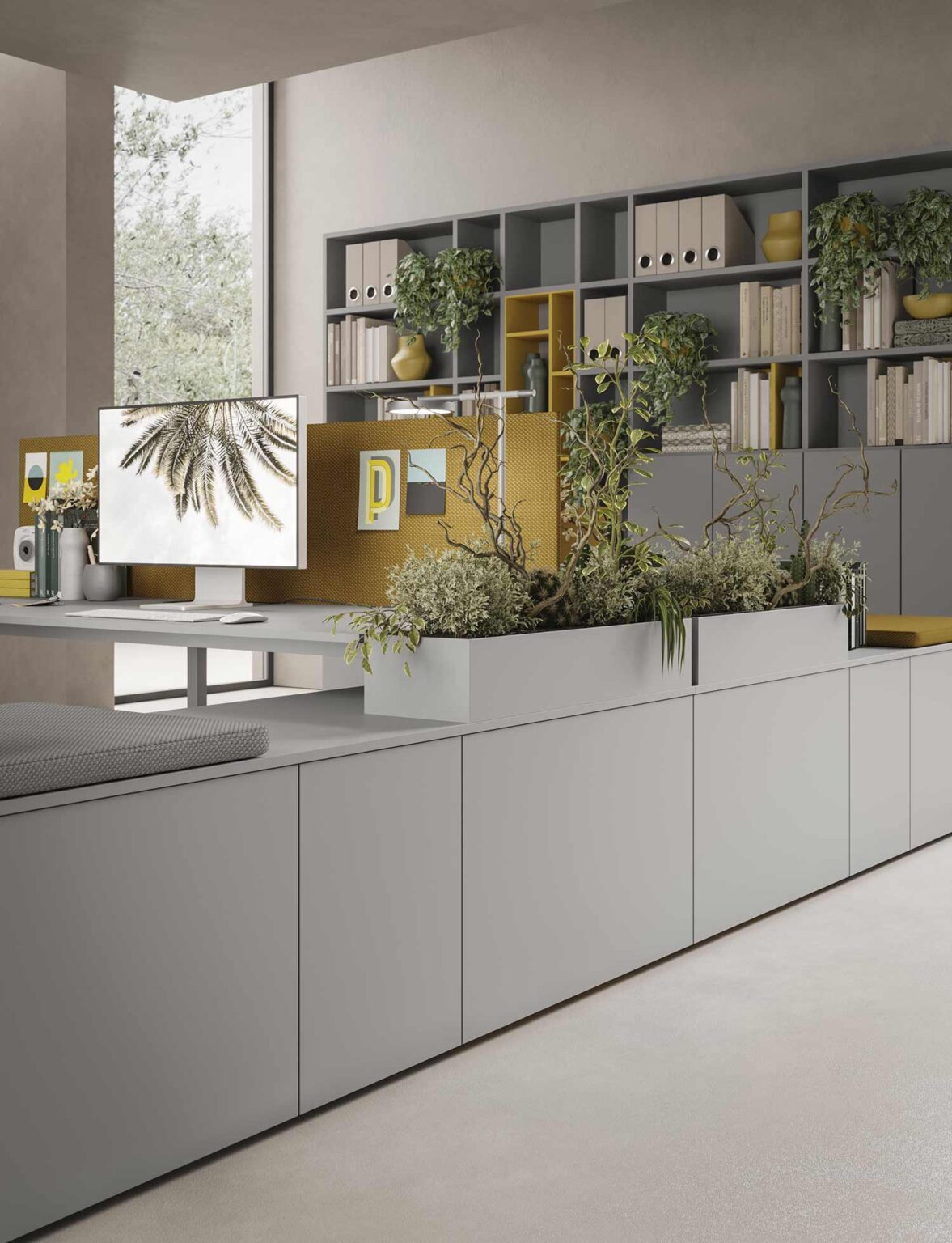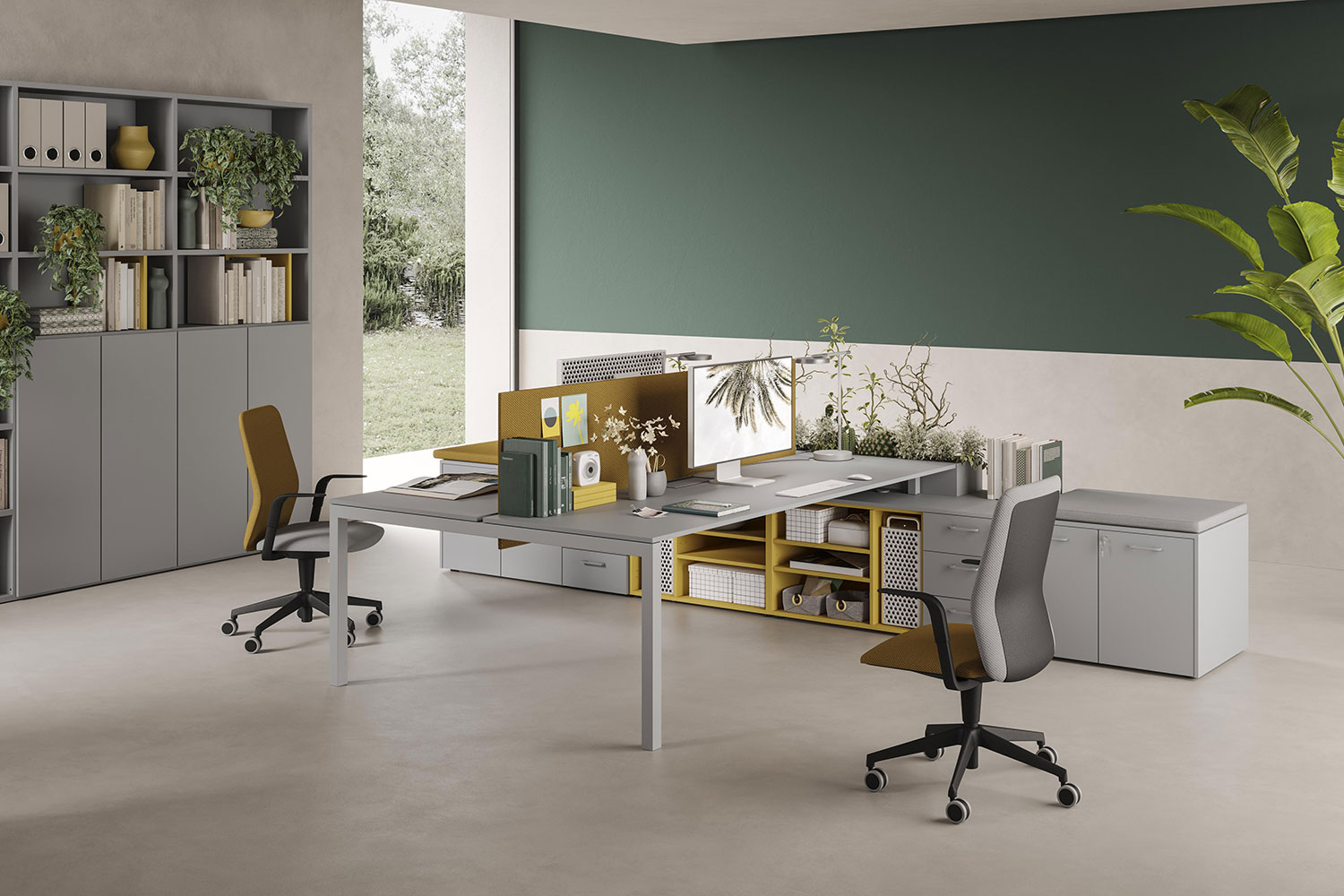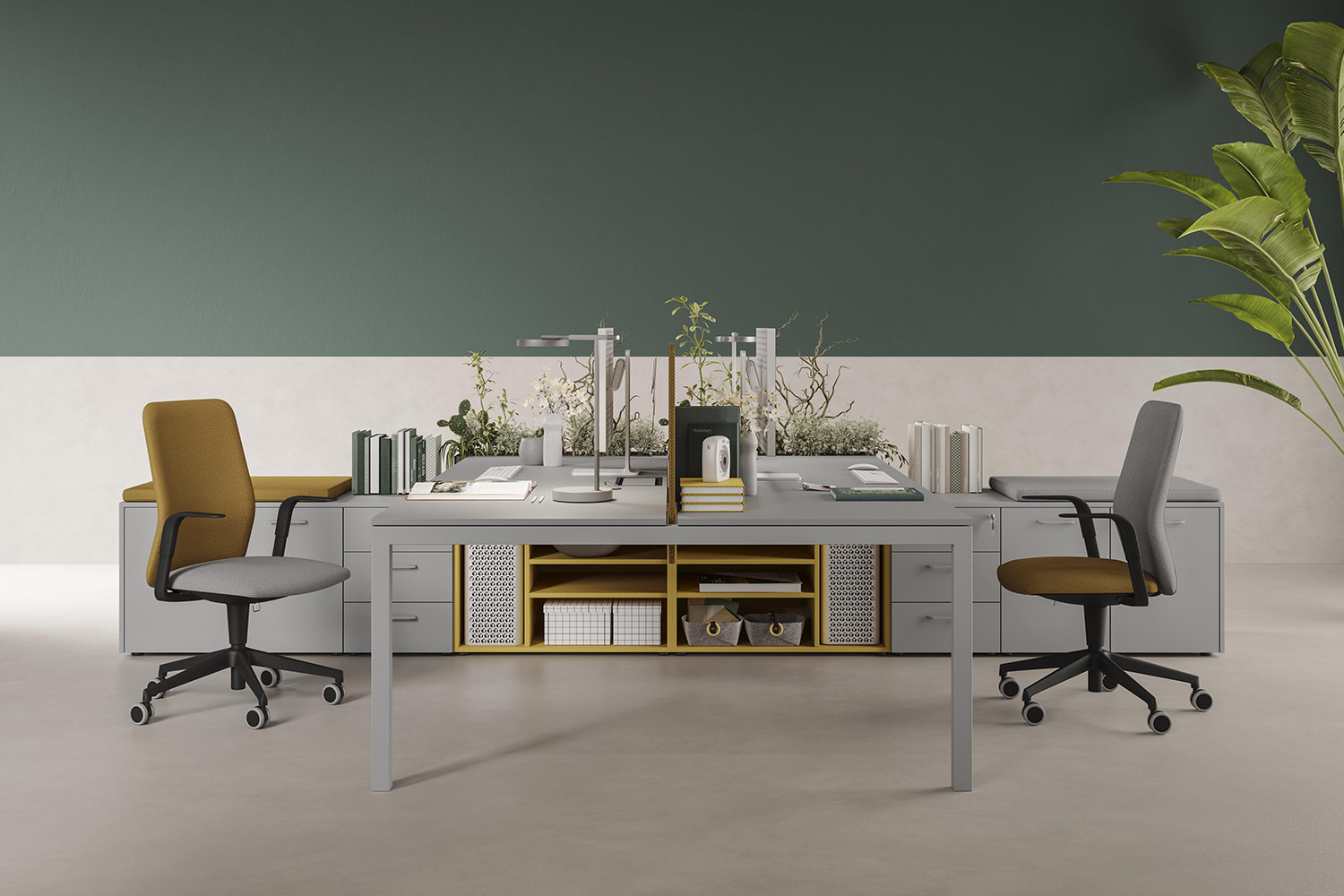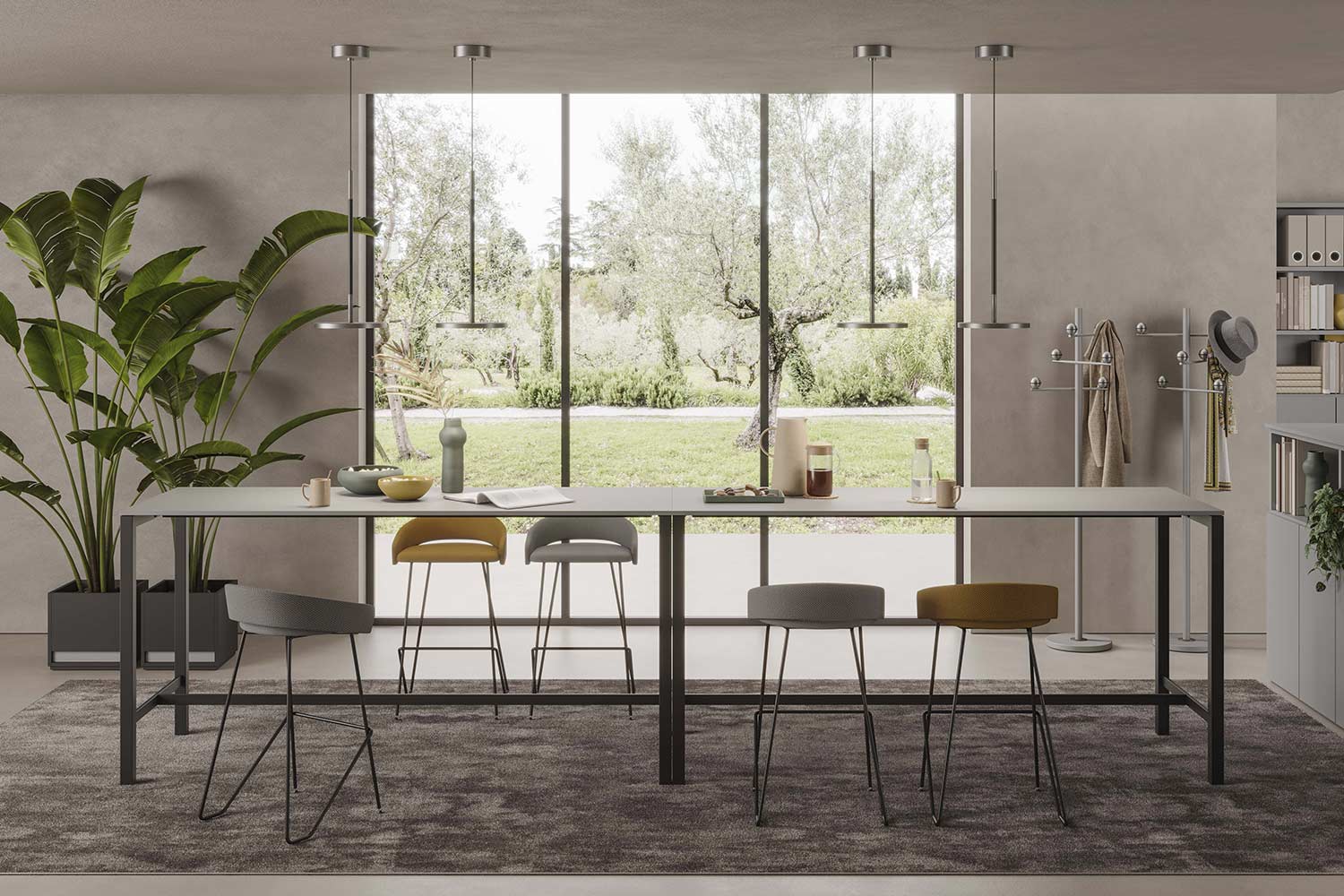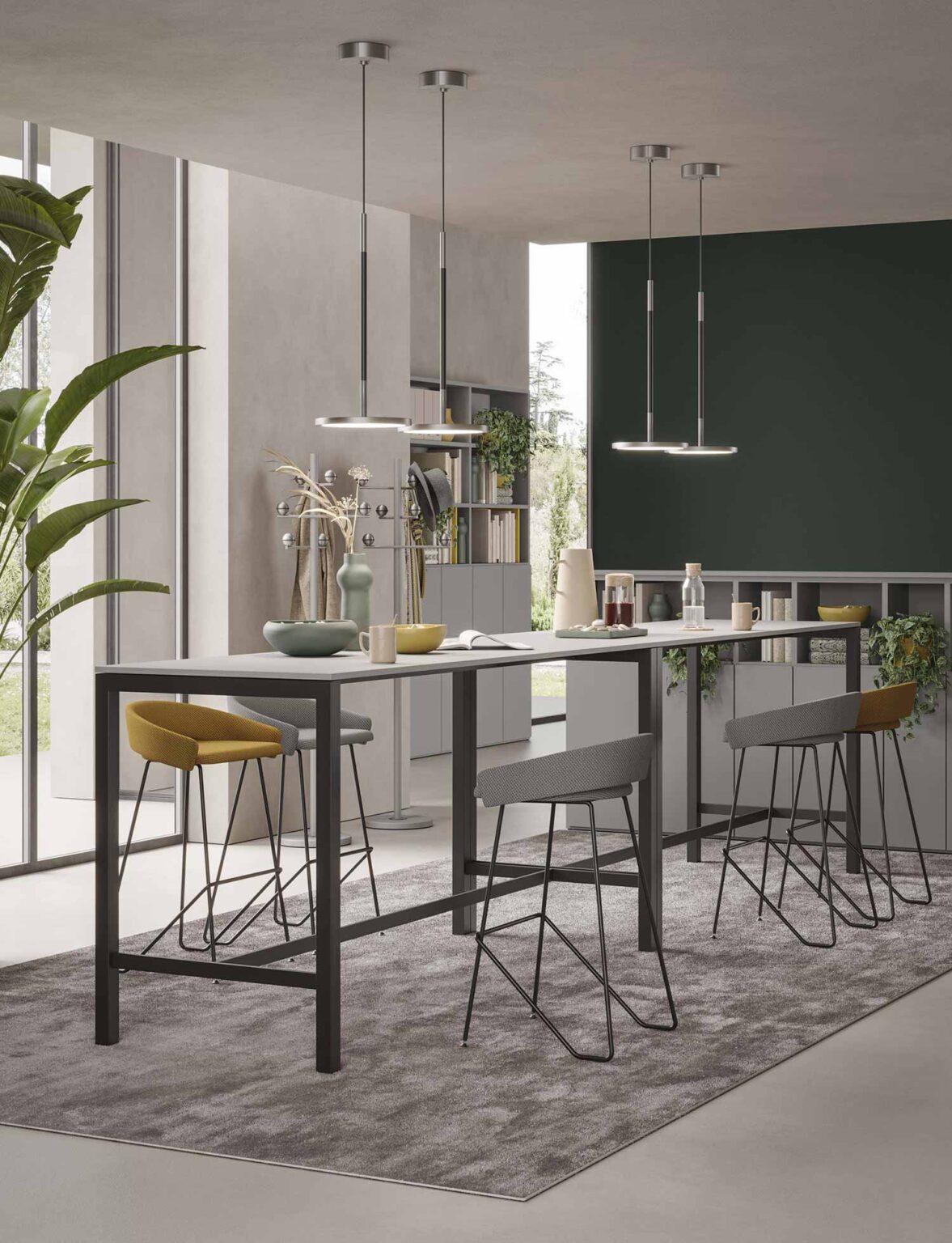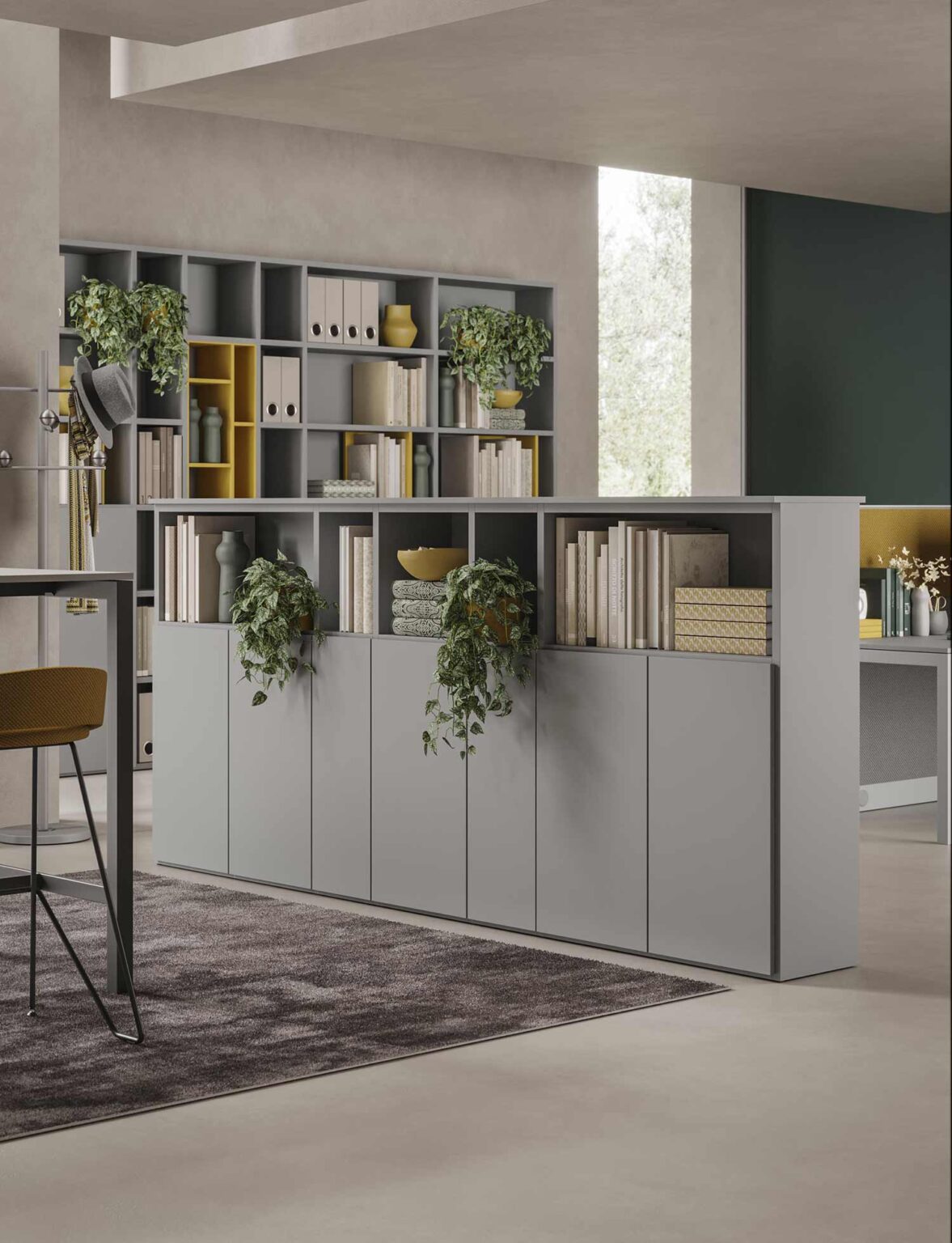Essential features of an effective office workstation
Essential features of an effective office workstation
Key elements to include in a well-designed office workstation, clutter free office, efficient workstation.
Designing an effective office workstation means balancing ergonomics, organization, and wellbeing. In a contemporary office, every element should contribute to creating a tidy, productive, and visually harmonious environment.
Below are the essential aspects to consider, when designing an efficient office workstation area.
1. A Functional desk starts with the right materials
A desk is more than just a work surface: it’s the operational hub that supports daily tasks. This makes material quality a top priority. Soft-touch surfaces like Fenix offer a pleasant tactile experience and reduce glare, creating a more comfortable and professional setting compared to standard melamine. Material choice affects not only aesthetics, but also day-to-day comfort and the durability of the office workstation.
2. Fabric divider panels: functional and decorative
A fabric divider panel acts as both a functional and decorative element. Besides providing visual separation between workstations, it enhances acoustic comfort by absorbing background noise. The option to pin memos or documents directly onto the panel allows personalization, without cluttering the desk surface.
3. Ergonomic seating for daily comfort
An office chair is not just another piece of furniture. It should guarantee ergonomic support and comfort throughout the workday. The best models offer adjustable seating, lumbar support, and adaptable armrests. A quality chair not only helps prevent posture-related issues, but also enhances productivity.
4. Integrated storage units for discreet organization
Built-in storage units help keep the office workstation clear of clutter. They allow documents, stationery, and personal items to be organized discreetly and accessed easily. This feature contributes to a clean, professional-looking workspace that promotes concentration.
5. Cabinets and shelving units: dividing without closing
Cabinets and shelving units provide an elegant way to define operational areas, creating visual barriers without breaking the sense of spatial continuity. Used as lightweight dividers, they help to structure the environment, without making it feel closed or heavy, preserving brightness and openness.
6. Open-space areas with high tables for informal meetings
Open-space office designs should include high meeting tables, ideal for quick meetings and informal discussions. These collaborative islands encourage direct interaction between colleagues, freeing up traditional meeting rooms and fostering a more dynamic work approach.
7. Natural elements for visual and mental wellbeing
Desk plants, natural wood accents, and tactile materials help to create a more welcoming environment. The presence of natural elements, whether at individual workstations or throughout the office, reduces stress and enhances the perceived quality of the space, supporting focus and wellbeing.
A well-designed office workstation results from balancing aesthetics with functionality. Desks, divider panels, ergonomic seating, integrated storage, and lightweight dividing furniture must work together to create an efficient, tidy space that supports productivity and wellbeing.
An effective office is a dynamic space designed for both work and people.

